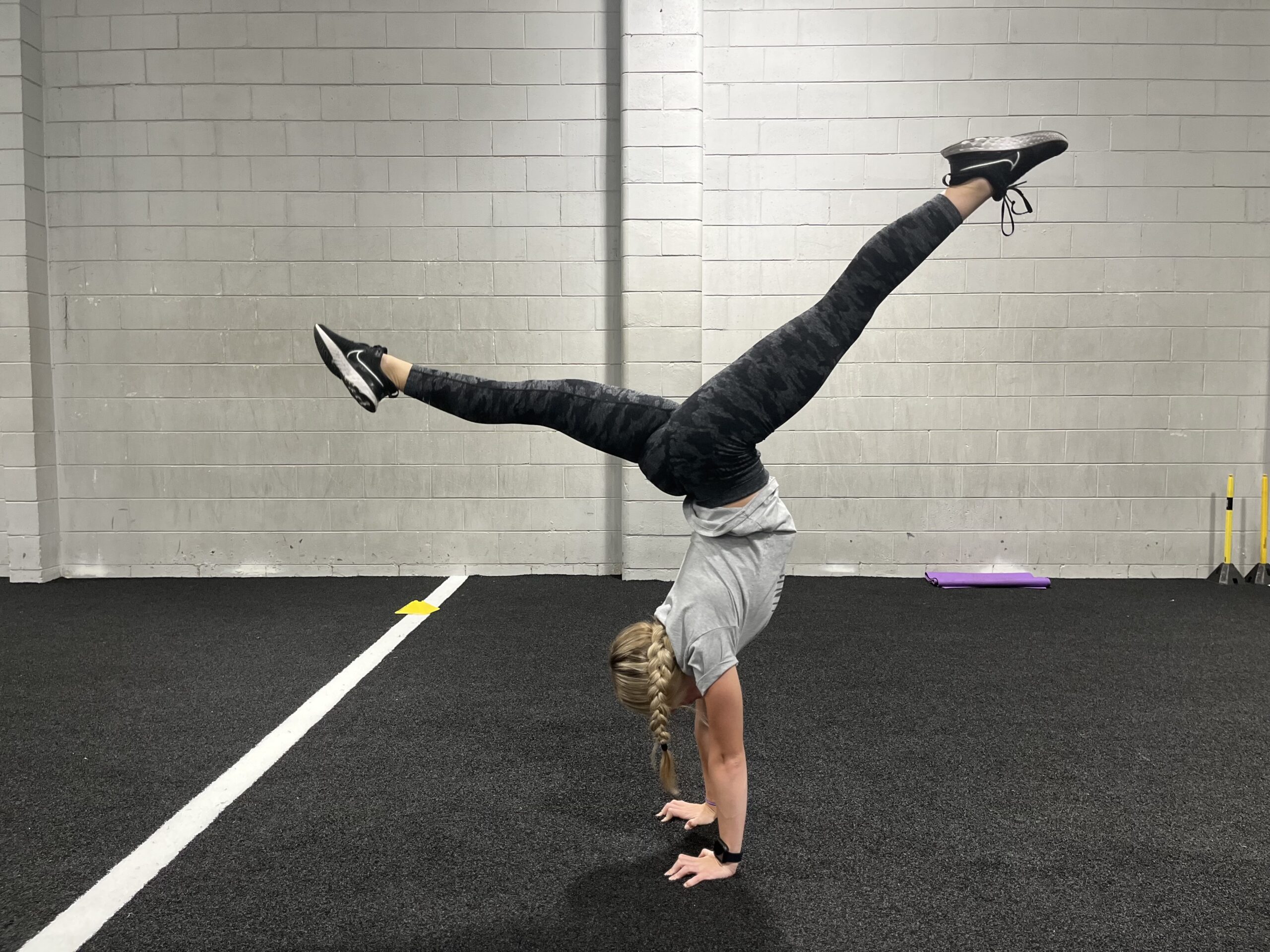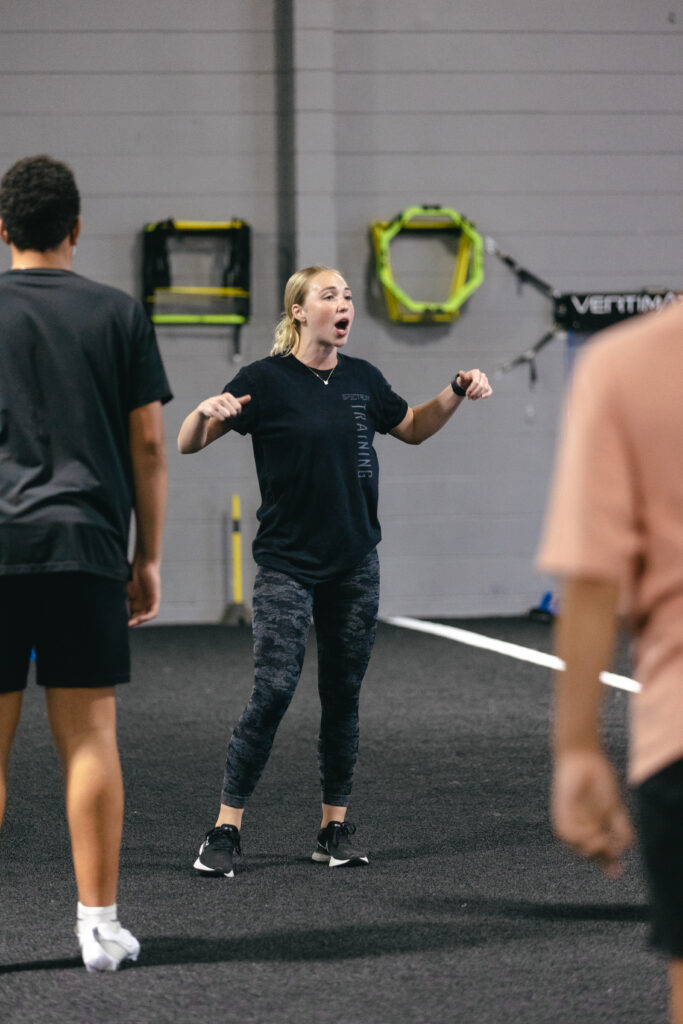
Why Gymnasts Need Strength Training
By Kalle Blizzard
____________________________________
Gymnastics has always been one of those sports that makes you just stand back and think, “Wow!” There is something so fascinating about watching another human being, just like yourself, completely defy gravity. Most people are puzzled at how something like this is even possible. They wonder:
- How are these athletes so nimble?
- How are these athletes so explosive?
- How are these athletes not completely terrified of falling on their neck at any given moment in time?
It’s just the beauty of the sport, and being a former gymnast, I too would ask myself these questions.
For some background, gymnastics is a sport that strives for perfection, and anything slight of it will be recognized. Literally, the sport has professionals dressed in black suits who’s only job is to critique how well you can execute a skill under pressure. Rarely points can be rewarded, but points can always be taken away. You get the idea of how important it is to be able to execute great body positions. I distinctly remember a time when I was a young gymnast where I got a glimpse into understanding the biomechanical functions of the human body. My coach was explaining to my teammates and I the importance of mind to muscle connection. In simpler terms, the importance of being able to point out a muscle, have your brain identify it exists, and then have your nerves fire it up! She said if you flex your quads, you can no longer bend your knees. I thought, “Wow, she’s right!” You can try it yourself even! It was the first time I saw the human body as something more mechanical. It almost seemed like we were robots. If you do this to your ankle, it will cause your knee to do this, and then that knee will cause your hip to do this and so on and so forth. What I know now, is that I had discovered that the human body is a kinetic chain. Whatever occurs at the feet is going to affect your entire body, all the way up to your head.
I thought that’s it! Understanding the kinetic chain and having the ability to flex your muscles, or having great mind-to-muscle connection, was the key to those nicely pointed toes and hyperextended legs us gymnasts and judges so greatly desire. Of course, it is not that simple since STRENGTH, FLEXIBILITY, BALANCE, COORDINATION, and PROPRIOCEPTION are also extreme factors in performing skills, but gymnastics is based greatly on our human lever system. If you manipulate or change the position or tension placed on a specific muscle or joint, it affects the entire kinetic chain that runs from our feet to our head. Human beings are extremely adaptable and mechanical, so it makes sense how us gymnasts really can defy gravity!
Don’t get me wrong, flipping multiple times in the air, or bending completely in half is super cool, but there is one key element that most gymnasts are missing in their training regime. And that key element is- Weight Training. Gymnastics is seen as some foreign or completely different sport that requires only gymnastics-based type training, which I think puts a great disadvantage on the gymnasts, especially the youth. Many of the talented gymnasts you know have been practicing gymnastics since “Mommy and Me” classes all the way up until high school. Gymnasts train for at least 4 hours a day, constantly repeating skills over and over. Sometimes the elite gymnasts will train for up to 8 hours a day. These gymnasts specialize by the age of 8 or 9, and I was one of those athletes. Before puberty you already know what sport you’re going to be doing, or what sport you’re going to be attempting to do for the next 8-10 years. These gymnasts never got time to try other sports, which does not allow them to be as well rounded and balanced as an athlete. This can be harmful to the athlete in the long run. Gymnasts won’t get the same conditioning that’s required in soccer, or the same hand eye coordination required to catch a softball, because they never got the chance to play.
For the majority, the conditioning and strength training is strictly calisthenic and body weight training, with a major focus on flexibility and balance. Definitely a well-rounded human being, but still too specific for an athlete, especially a youth athlete. For example, my coach had us doing rope climbs, push-ups, single leg squats, and handstand holds for days. It worked out just great…until it didn’t. We were strong athletes; however, overuse injuries were occurring more often than they should and that was becoming an issue. This is largely caused by the constant repeated bouts of stress placed on the same joints. One thing my gymnastics academy lacked was any weights or resistance bands. I want to emphasize gymnasts experience over 17x their body weight of force on their joints! Imagine a gymnast running full speed, flipping from their feet to their hands, and repeating it over and over again. You have the force of gravity along with your body weight, and all the additional forces created from the speed and power you develop from your run up.
You have to not only build the muscular strength and endurance, but the tendon and ligament strength to handle this immense amount of pressure your bones and joints experience. Even more specifically these forces are placed on some of the smaller joint complexes like our wrist and ankle joints. Imagine the amount of force 17x your own body weight places onto your tiny wrist complex. That’s extreme! No wonder gymnasts have joint pain. Weightlifting can help reduce that. Incorporating more weightlifting activities would have been extremely beneficial for my personal gymnastics career, and I know many other gymnasts could relate. That additional load from weights adds more stress to the tendons and overload the tissue, which then forces the tissues to overcome and adapt. In return, they can handle more forces. Progressive overload is the key to strength gains. It is much easier and more practical to progressively overload with additional load, than to only have the load of your own body weight.
I always preach how a well-rounded athlete comes from doing a variety of different training techniques. Gymnastics is a sport that seems to get sport specific extremely early…too early. In your early years you are not taught how to do the basic movement patterns required for any sport, or even just everyday life.
- Squatting
- Hinging
- Pushing
- Pulling
- Bracing
However, you are taught how to forward roll, cartwheel, and handstand by the age of 5. Every gymnastics move I mentioned requires one of those movement patterns. Since gymnastics is such a strength and movement-based sport you have to give the athletes an idea of how to just move their body properly first. Then you can introduce all the weight bearing and more sport specific movements. Allow the athletes to gain proprioception and spatial awareness, then get down to the backflips. I retired at 19 and started working closely alongside a personal trainer. We focused on strength training. I can tell you for a fact that I am much stronger now, than I was as a gymnast. A large contributor to that is because I put the hard work into the weight room. Every gymnast should follow a strength and conditioning program. It does not need to be extremely sport specific, especially in the more amateur and novice levels. I guarantee you your gymnasts won’t “get too bulky” or “lose their flexibility” if you follow the correct plan. It will just make them stronger athletes, with lesser chances of injuries. I wish someone would have told me this when I was a gymnast.

Leave a Reply